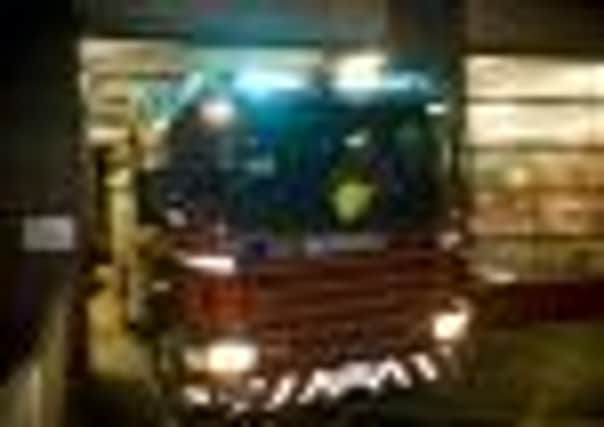Firemen in Lothian told to cut high casualty rate


There are four casualties for every 10,000 people in the area, a third higher than both the national average and Scotland’s largest fire service in Strathclyde, and four times higher than Dumfries and Galloway, according to findings from public spending watchdog the Accounts Commission.
The report’s authors, in a strongly-worded criticism of the service, also said that the high casualty rate was “a significant concern” and suggested that there was “no evidence” that fire chiefs in the area knew the reason for it.
Advertisement
Hide AdAdvertisement
Hide AdCasualty rates, which cover all deaths and injuries dealt with by fire crews in Lothian and Borders have been “consistently above national levels for many years” and were “relatively high” the Accounts Commission said.
There was a national figure during 2010-11 of 2.6 fire casualties for every 10,000 Scots, with a figure of 2.5 for Strathclyde, 2 for Tayside and 1 for Dumfries and Galloway the report showed.
The findings come just weeks after a report from the commission said that fire crews in the Highlands and Islands were being exposed to “significant” risk to their health and safety because of a controversial decision to turn voluntary units into retained duty stations.
Meanwhile, the Lothian and Borders report found that the area had “an effective service with a clear strategic vision” but said that it needed to do more “preventative work”.
It went on to suggest that the high casualty figure was explained by Lothians and Borders having half of Scotland’s houses of multiple-occupancy, which the Accounts Commission said were “widely recognised as high-risk properties.”
The report said: “Casualty rates in the Lothian and Borders area are comparatively high and have been consistently above national levels for many years. In 2010-11, the proportion of fatal and non-fatal casualties was the highest in Scotland.
“This is a significant concern and there is no evidence that the service has analysed why the level of casualties in the area is relatively high.
“The service needs to consider how it can use data on incidents and casualties to identify common factors so that it can target preventative work.”
Advertisement
Hide AdAdvertisement
Hide AdA spokeswoman for Lothian and Borders fire and rescue service said that its high casualty figures was partly due to the way it recorded all those treated for smoke inhalation as casualties.
The spokeswoman said: “It is our policy to give anyone who has been rescued or has self-rescued and has suffered slight smoke inhalation or shock, oxygen or first aid at the scene.
“Under our incident recording system guidance, these people would automatically be considered as having received treatment at the scene or having had a precautionary check-up and would move up from being recorded as a non-casualty to a casualty.”
A Scottish Government spokesman said: “It is a matter for Lothian and Borders Fire and Rescue how findings from this report are addressed.”